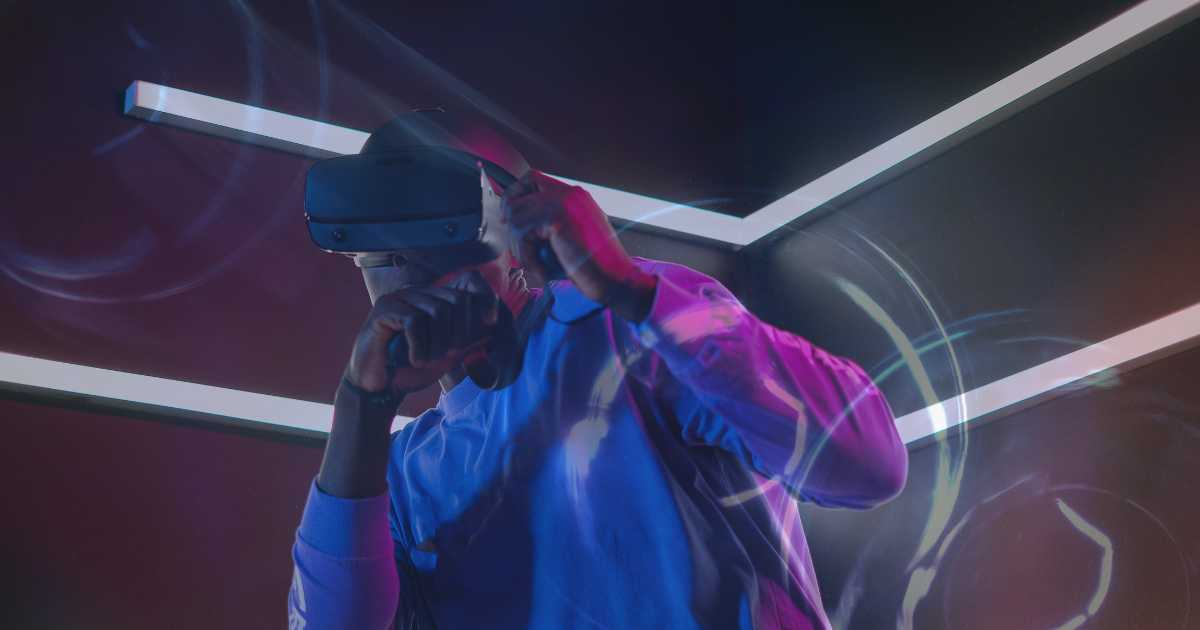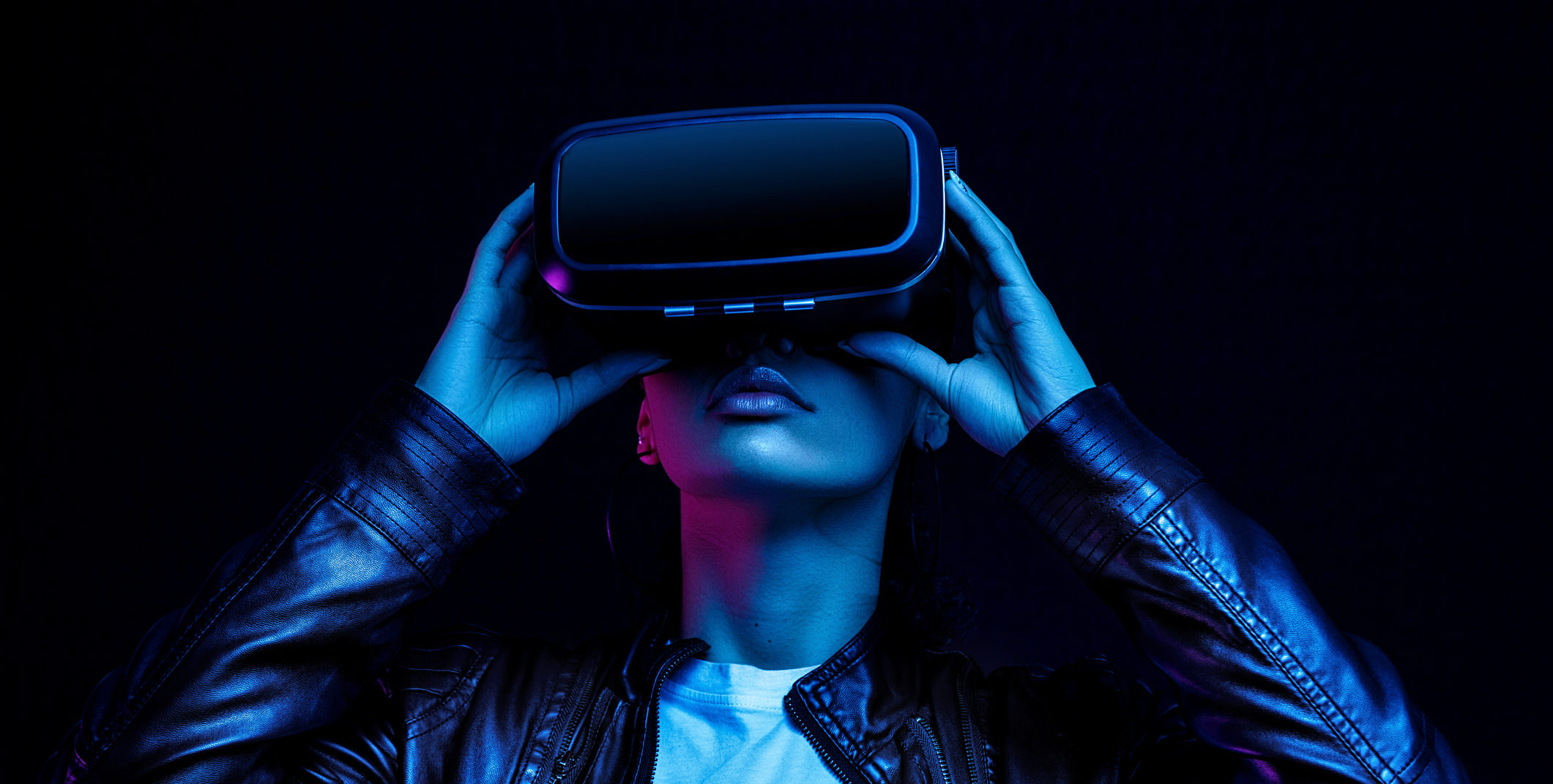
It’s a computer-generated 3D environment that seems realistic, as it is perceived by the user’s senses. To interact, you need a particular headgear with a screen or goggles known as a VR headset. Software is used to produce sculptures, sounds, and other sensations to create this virtual place. If the users can intensely immerse themselves in virtual surroundings and prevent their physical surroundings from interfering, they can believe it is real, even if it is fantastical.
How does virtual reality work?

Virtual reality is a computer-generated simulation that allows a user to experience a different reality. It works by creating a 3D environment that is designed to be as realistic as possible, using a variety of techniques to make the experience as immersive as possible. Several components of a virtual reality system work together to create the experience. These include:
A headset
This is the primary interface that the user wears on their head. It typically includes a screen or screens that display the virtual environment, as well as sensors that track the user’s movements.
Input devices
These allow the user to interact with the virtual environment, such as hand controllers or gloves, and may include haptic feedback to provide a sense of touch.
Computer hardware
This provides the processing power needed to generate the virtual environment and track the user’s movements.
Also Read: Blockchain Demystified: The Ultimate Guide to Understanding Its Incredible Power
Software
This is the program that creates and renders the virtual environment and may include physics engines, graphics engines, and other tools to make the experience as realistic as possible.
Once the system is in place, the user can put on the headset and enter the virtual environment, using the input devices to interact with objects and move through the environment. The system responds in real time to the user’s movements, making the experience feel more realistic and immersive.
Types Of Virtual Reality
Virtual Reality can be categorized into three primary types,
- Non-Immersive
- Semi-Immersive
- Fully-Immersive
Non-Immersive

This type is frequently neglected when talking about VR because they are so widespread in our daily lives. Even though this particular technique creates a computer-generated environment, It still permits the user to be aware of and manage their real-world surroundings. An excellent example of a non-immersive VR experience is playing a video game.
Semi-Immersive
Semi-immersive technology lays out a fragmentary virtual environment for the users. More detailed images generate a more interactive experience. Users can still feel like they are in another reality when they concentrate on the digital image, but it also allows them to remain conscious of their immediate environment. This type of VR is frequently utilized for educational purposes and relies on high-definition visuals and powerful computers that partially mimic the design and functionality of operational real-world systems. The best example to define semi-immersive VR could be the flight simulator.
Fully-Immersive
This is the most true-to-life simulation experience, it feels like you’re present there encountering everything in the virtual realm. The user must put on VR goggles to engage with the virtual world. VR headgears provide quality-resolution content with a wide three-dimensional view. The user’s eyes frequently divide the display, creating a stereoscopic 3D illusion. This type of VR has been extensively used for gaming and other kinds of entertainment. The applications of VR are endless.
Advantages Of Virtual Reality
Exploring realms without physically being there
As VR is a true-to-life environment created with the help of multiple technologies, it is advantageous to explore different places without physically being there. This has made people’s lives much easier, more enjoyable, and more adventurous.
Modernization in the educational system

Reading from textbooks has now in many places been replaced by virtual study. In the virtual classroom, the instructor lectures the student with the aid of VR technology This equipment helps users to visualize an artificial world depending on the topic and analyze the research.
Increases interest and engagement
People nowadays prefer the intake of practical knowledge over the monotonous book reading as it is more fascinating and thrilling, hence there has been a lot of interest in virtual reality schooling.
Disadvantages Of Virtual Reality
Apart from making our lives easy virtual reality also has negative impacts on one’s life,
Addiction to Virtual Reality
Virtual surroundings can be pretty addictive. Apart from teenagers, you may also find adults involving themselves in this artificial world which can lead to a variety of problems. Physical health is also compromised a lot and teenagers even tend to neglect their studies to play games.
Impact on the Human Body
Since we view the virtual world on a screen, it can be pretty stressful for our eyes, leading to problems like eye strain, lightheadedness, and nausea.
Absent from the real world
In a digital world, there aren’t any real-world issues. People after being part of that computer-generated world, do not prefer to get along with the real world. For them, the world of VR is their actual world.
Uses Of Virtual Reality
VR in Sports
VR is redefining the sports industry for athletes, coaches, and spectators. With the help of VR, coaches, and athletes can analyze different aspects of a particular sport and work on it for the betterment by observing and experiencing certain situations repeatedly.
VR in Fashion
Another application of VR is in fashion where it has had a major impact. Virtual simulations of the store surroundings, for example, can be highly useful for retailers to design and display their products without fully committing to the build, as they would have in the real world. Many popular brands have already started to incorporate VR into their operations. VR applications for these big brands provide a 360 view of fashion shows and allow shoppers to virtually try on items.
VR in Education
VR can produce a captivating and engaging learning atmosphere that gives students a deeper understanding of complicated subjects. Additionally, it can be used to provide training in sectors like health care and army services.
VR in Medical Training
Given its interactive aspect, medical residents are now employing VR to practice surgical procedures. With its consequence-free learning surroundings, it helps to abolish the possibility of harming the patients or making an error while practicing it in real life.
VR in Tourism
VR can be used to develop virtual tours of destinations around the world, giving tourists a more comprehensive and engaging experience.
Conclusion
Virtual Reality, without a doubt, has been one of the greatest inventions. With its diversification, it has helped people in different sectors. Making lives more accessible and more happening with its interactive unreal world, VR can only go to greater heights from here!



I am not sure where you are getting your information, but great
topic. I needs to spend some time learning much more or understanding more.
Thanks for wonderful information I was looking for this info for my
mission.